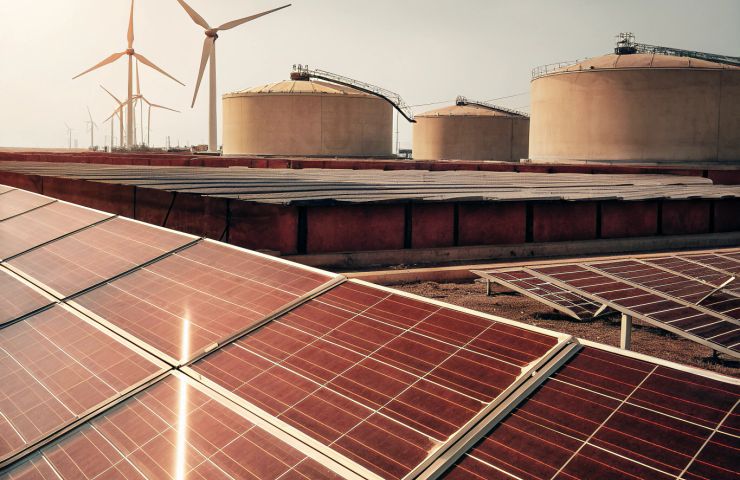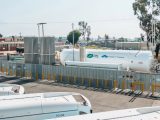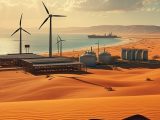
Green Hydrogen Hub at Pudimadaka: NTPC’s 7 GW Vision for Clean Ammonia, Methanol and e-SAF
October 1, 2025An Ambitious Leap into Green Hydrogen
These days, sustainable energy is on everyone’s lips, and NTPC Limited, India’s state-run power giant, isn’t just watching from the sidelines—they’re diving headfirst into the world of green hydrogen. Back in January 2025, they laid the foundation stone for what could be India’s first full-scale green hydrogen hub at Pudimadaka, near Visakhapatnam in Andhra Pradesh. Now, their renewables arm, NTPC Green Energy Limited (NGEL), has put out the call: global and local players, send in your expression of interest by 24 October 2025 and join New Delhi’s big push for industrial decarbonization and energy independence.
Core Project Highlights
Picture a 7 GW electrolyser complex churning out roughly 2.5 million tonnes a year of green chemicals by 2032. We’re talking clean ammonia, methanol, e-sustainable aviation fuel (e-SAF) and green urea—all fueled by NGEL’s own renewable power, water, biogenic CO₂ and green hydrogen. Thanks to Visakhapatnam’s deep-water port, solid logistics network and plentiful solar and wind resources, everything from feedstocks to utilities is ring-fenced within the hub. Developers can zero in on tech deployment without worrying about sourcing. This entire plan dovetails perfectly with India’s National Hydrogen Mission—aiming for 5 Mtpa of green hydrogen by 2030—and banks on economies of scale to drive down the Levelized Cost of Hydrogen.
Industrial-scale Electrolysis for Hydrogen Production
At the heart of Pudimadaka, rows of solar panels and wind turbines will keep alkaline, PEM or even cutting-edge solid oxide stacks humming, splitting water into oxygen and green hydrogen. Spread across about 600 hectares, it could be one of the world’s largest single-site hydrogen factories. As mass manufacturing pushes electrolyser costs from today’s $500–700/kW closer to $300/kW, this hub becomes the ultimate testing ground for scaling up, cutting costs and localizing the supply chain. By being tech-agnostic, NGEL is setting the stage for firms to battle it out on durability, efficiency and real-world performance—an opportunity that’s pretty rare at this size.
Building a Complete Green Chemicals Ecosystem
Hydrogen is just Act One. A network of reactors will hook it up with atmospheric nitrogen to crank out clean ammonia, while dedicated methanol units will capture CO₂ from biogenic sources and turn it into fuel. The e-SAF plant aims for up to 100% lifecycle emissions reduction—airlines are already experimenting with SAF blends and will be eyeing secure offtakes here. Meanwhile, a green urea facility will churn out low-carbon fertilizer for the farms. Stitching these units together, NGEL is crafting a circular, sustainable energy-driven chemicals campus that hits domestic demand and export markets alike. With global ammonia demand north of 185 Mtpa and methanol closing in on 140 Mtpa by 2030, even a slice of Pudimadaka’s output is a game-changer for low-carbon supply chains.
Strategic Significance and Regional Impact
If everything goes to plan, Pudimadaka could reposition India as a heavyweight in the global clean ammonia and chemicals trade. We’re looking at up to 3,000 direct jobs, plus a ripple effect for construction, operations and logistics. Electrolyser manufacturers, catalyst makers and engineering firms might set up shop locally, too. Of course, large-scale water use means desalination plants and recycling loops are non-negotiable to keep resources in check. On top of that, central and state incentives—think accelerated depreciation and viability gap funding—could juice returns, and revenue from carbon credits is icing on the cake. Local suppliers and service providers are already gearing up for a steady drumbeat of orders.
Infrastructure Backbone: Ports, Power and Water
NGEL’s blueprint leaves no stone unturned. Dedicated transmission lines and a battery storage buffer will iron out renewable intermittency, so hydrogen keeps flowing. A multi-megawatt desalination complex will tap seawater, safeguarding freshwater. Specialized storage tanks and pipelines will shuttle hydrogen, nitrogen, CO₂ and finished chemicals, while a captive jetty geared for up to 5 Mtpa of exports plugs the site straight into international markets. Port operators are getting custom chemical carriers, shore-loading arms and safety protocols ready. And to keep this engine humming, NGEL’s teaming up with local institutes on skilling programs—training the workforce that’ll maintain and operate this green behemoth.
The Road Ahead
Once EOIs close on 24 October 2025, NGEL plans to shortlist partners by early 2026 and dive into detailed RFPs, joint-venture talks and pilot commissioning. By 2028, you could see the first electrolyser modules going live, with a phased ramp-up all the way to 2032. From technology trials and EPC phases to offtake negotiations, developers will have their hands full. NGEL will likely benchmark Europe’s North Sea hydrogen hubs for lessons on stakeholder engagement and risk-sharing. For any bidder, this is a rare shot at anchoring in a fully integrated, state-backed green hub.
About NTPC and NGEL
NTPC Limited, founded in 1975, is India’s biggest state-owned power producer. Over the last decade, it’s gone all-in on renewables, spawning NTPC Green Energy Limited to spearhead solar, wind and green hydrogen ventures. The 7 GW Pudimadaka hub sits at the crossroads of India’s 2021 National Hydrogen Mission and the country’s broader ambition to decarbonize heavy industry and carve out a new export economy for clean chemicals.



 With over 15 years of reporting hydrogen news, we are your premier source for the latest updates and insights in hydrogen and renewable energy.
With over 15 years of reporting hydrogen news, we are your premier source for the latest updates and insights in hydrogen and renewable energy.